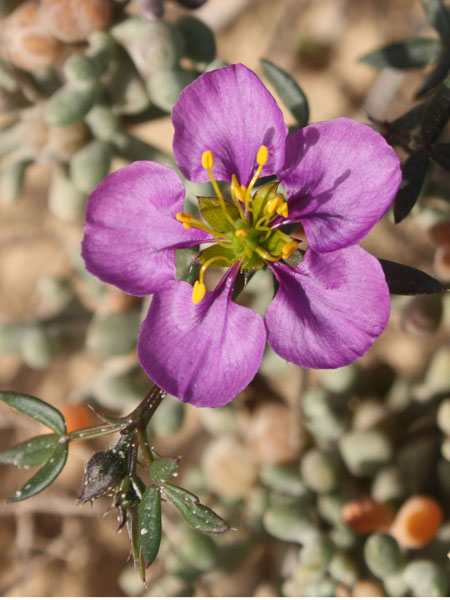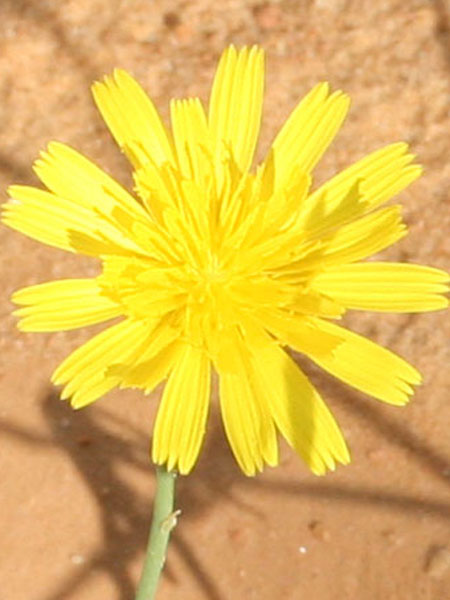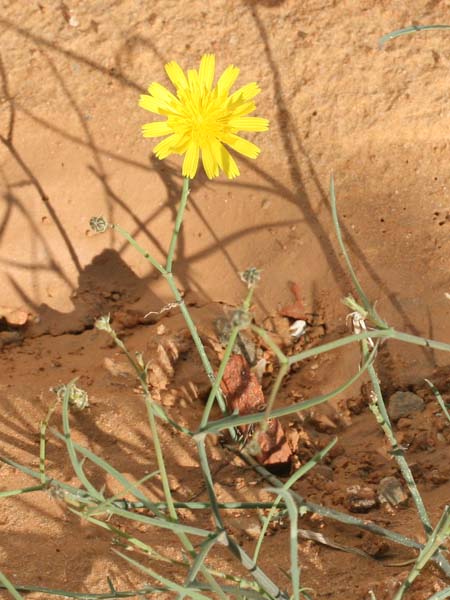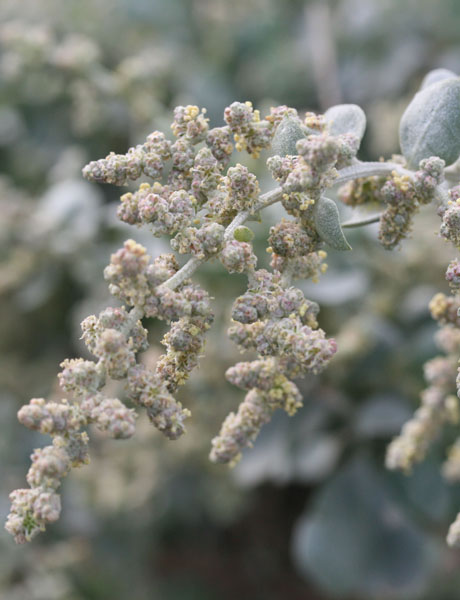Cakile maritima
Règne : Plantes / النّباتات
Embranchement : Spermaphytes / البذريات
Sous embranchement : Magnoliophytes ou Angiospermes / مستورات البذور
Classe : Eudicotylédones / ذات الفلقتين
Ordre : Brassicales / الكرنبيات
Famille : Brassicaceae [Cruciferacea]/الفصيلة الكرنبيّة أو الخردليّة الصليبيّة
Genre : Cakile
Espèce : maritima
Chromosomes: 2n=18
Protologue
Scop., Fl. Carniol., ed. 2, 2: 35 (1772)
Synonymes
Cakile aegyptiaca Willd., Sp. Pl., ed. 4, 3: 417 (1800). Cakile latifolia Poir. in Lam., Encycl., Suppl. 2: 88 (1811). Cakile edentulata Jord., Diagn. Esp. Nouv. 344 (1864). Cakile littoralis Jord., Diagn. Esp. Nouv. 345 (1864). Cakile maritima subsp. maritima (Willd.) Nyman, Consp. Fl. Europ. 29 (1878).
Noms vernaculaires
Tunisien Arabe Anglais Français Tamazight
رشاد البحر
إسليح بحري
ككلي
رشاد البحر
Searocket
Buniade maritime
Cakilier
Tétine de souris
Roquette de mer
Toxique
non
Comestible
oui
Latex
non
Description botanique
Description genre
"Calice presque fermé, disque de l'ovaire portant quatre petites glandes, style simple ou nul, stigmate obtus, silicules biarticulées, indéhisantes, une seule graine renfermée dans chaque articulation.
Description espèce
"
Plante glabre, étalée, s’élevant à 40 cm au-dessus du sol , rameuse dès sa base, ses rameaux sont ascendants.
Tiges ascendantes ou diffuses , rameuses , de 20-40 cm. Feuilles charnues, pennatifides profondément échancrées, à lobes obtus, inégaux, de couleur gris-vert. Fleurs bisexuées assez grandes à 4 pétales roses, blanchâtres ou violets, odorants, 2 fois plus longs que le calice. Inflorescence grappes simples et longues souvent à plus de 20 fleurs et fruits. Fruits silique courte en deux morceaux en forme de fer de lance.
Références Botaniques
Pottier-Alapetite G. (1981). Flore de la Tunisie Angiospermes –Dicotylédones (Apétales- Dialypétale , Première partie). Imprimerie Officielle de la République Tunisienne (Eds), 543p. Edouard LE FLOC’H, Loutfy BOULOS et Errol VELA. (2010). Catalogue synonymique commenté de la FLORE DE TUNISIE. République Tunisienne, Ministère de l’Environnement et du développement durable, Banque Nationale de Gènes. 500 p www.theplantlist.org
Biologie
Forme de vie Annuelle ou vivace Type biologique Thérophyte Photosynthèse C3
Phénologie
Floraison
JanvierFévrierMarsAvrilMaiJuinJuilletAoûtSeptembreOctobreNovembreDécembre
Fructification
JanvierFévrierMarsAvrilMaiJuinJuilletAoûtSeptemberOctobreNovemberDécembre
Localisation carte
Ecologie
Adaptation Colonisatrice des sables maritimes et Résistante aux embruns avec des climats allant de l’aride à l’humide. Représente un potentiel écologique important pour sa fixation des sols. Glandes à sel non Invasive non
Répartition géographique
Localisation Etage biocimatique Pluviométrie anuelle (mm) GPS Djerba (Sidi Jmour, Déc.2013) Aride supérieur 209 33°49'55.12"N/10°44'54.37"E Monastir (Skanès, Palais Nov.2014; Oct.2015) Semi-aride inférieur 331 35°46'45.06"N/10°47'16.74"E Cap Bon (Soliman Fév. 2016) Semi-aride supérieur 444 36°43'49.02"N/10°28'2.02"E
Utilisations générales
"La majeure partie de la plante est consommée crue ou cuite, malgré une amertume marquée. Son goût très amer est utilisé principalement comme arôme. Les jeunes feuilles sont ajoutées à la salade, les feuilles plus âgées peuvent être mélangées avec des feuilles de dégustation douce. La poudre des racines séchées est mélangée avec des farines de céréales pour faire du pain en cas de famine.
Utilisations médicinales
"Propriétés traditionnelles : diurétique, apéritive, digestive, purgative. Elle est utilisée pour soigner des maladies infectieuses et pour nettoyer les poumons des mucosités visqueuses. Récentes propriétés: antifongiques, insecticides, antibactériennes, antinématodes, antioxydantes et antimutagéniques utilisée dans le traitement des maladies démyélinisantes, elle pourrait aussi aider à guérir de la jaunisse et de l’hydropisie et en cas d’affections scrofuleuses et de perturbations lymphatiques Combinée à la vitamine B5, elle est utilisée en cosmétique comme hydratant, de la peau et préserve aussi la santé et l’éclat des cheveux.
NOTE : Ce site web ne traite pas de la phytothérapie et n'assume aucune responsabilité des effets négatifs de l'utilisation des plantes. Demander conseil à un professionnel avant d'utiliser une plante médicinale.
Appareils/Organes/Effets
Appareil digestif Appareil génital Système nerveux Appareil urinaire Appareil respiratoire Bouche / Dents Peau Cuir chevelu Tonique Antiscorbutique Hypolipédimie Hypoglycémie Anticancer
Description des semences
Forme elliptique Structure externe aucune Ornementation aucune Type de semence albuminée Longueur moyenne de 10 graines 4± 0,1 (mm) Largeur moyenne de 10 graines 2 ± 0,1 (mm) Épaisseur moyenne de 10 graines 1 ± 0,1 (mm) Masse moyenne de 100 graines (g)
Potentialités antioxydantes
PPT DPPH ABTS+ PRF Année mg GAE g-1 MS CI50 g ml-1 CI50 g ml-1 CE50 g ml-1 18,72± 0,66 157,87± 2,73 47,17± 0,57 246,40± 2,68 2016 Polyphénols totaux (PPT), Activités antiradicalaires (DPPH, ABTS), Pouvoir réducteur du fer(PRF)
Molécules : ADN / Protéines
Chromosomes : 18 Uniprot NCBI
Composition chimique
Noms Acides gras Acide erucique lien
Lipides Stérols lien
Terpènes Triterpènes (C30H48)
Composés phénoliques Coumarine lien
Flavonoïdes
Autres composés 2-methyl butyl glucosinolate
Alcaloïdes
Ethyl glucosinolate lien
Glucotropaeoline lien
glycosides de Sulfure
Vitamines Vitamine C lien
Références tunisiennes
Ben Amor N, Jiménez A, Megdiche W, Lundqvist M, Sevilla F, Abdelly C.(2006). Response of antioxidant systems to NaCl stress in the halophyte Cakile maritima.Physiologia Plantarum 126: 446–457. Ben Hamed-Louati I, Bouteau F, Abdelly C et al. (2016). Impact of repetitive salt shocks on seedlings of the halophyte Cakile maritima. Environ Control Biol 54:23–30. Debez A, Ben Rejeb K, Ghars MA, Gandour M, Megdiche W, Ben Hamed K, Ben Amor N, Brown SC, Savouré A, Abdelly C. (2013).Ecophysiological and genomic analysis of salt tolerance of Cakile maritima. Elsevier 92: 64–72 9. Debez A, Hans-Peter Braun, Andreas Pich, Wael Taamalli, Hans-Werner Koyro, Chedly Abdelly, Bernhard Huchzermeyer. (2012). Proteomic and physiological responses of the halophyte Cakile maritima to moderate salinity at the germinative and vegetative stages JOURNAL OF PROTEOMIC S 75 : 5667 – 5694 11. Debez A, Benhamed K, Grignon C, Abdelly C (2004). Salinity effects on germination, growth, and seed production of the halophyte Cakile maritima, Plant Soil 262: 179-189. 10. Gandour M, Tamaalli W,Trabelsi N, Hessini K, Sebei K, Debez A, Abdelly C. (2011). How to optimize the seed and seed-oil production in the cash crop halophyte Cakile maritima? Journal of Medicinal Plants Research. 5: 5982-5987, 9. 13. Ghars M, Debez A, Smaoui A, Zarrouk M, Grignon C, Abdelly C (2006). Variability of fruit and seed-oil characteristics in Tunisian accessions of the halophyte cakile maritima (Brassicaceae) MA Khan and DJ Weber (eds.), Ecophysiology of High Salinity Tolerant Plants, 55-67. 14. Houta O, Neffati M, Amri H. (2012). Phenolic Contents and Antioxidant Potential of Cakile maritimum JBAPN . 2 (6), pp. 387. Ksouri R, Megdiche W, Debez A, Falleh H, Grignon C and Abdelly C .(2007). Salinity effects on polyphenal content and antioxidant activities in leaves of the halophyte Cakile maritima. Plant Physiology and Biochemistry, 45(3/4): 244-249. Ksouri R, Megdiche W, Debez A, Falleh H, Grignon C, Abdelly C (2007). Salinity effects on polyphenol content and antioxidant activities in leaves of the halophyte Cakile maritima. Plant Physiology and Biochemistry ,45: 244-249. Ksouri R, Megdiche W, Jallali I, Debez A, Magné C, Isoda Hiroko I, Abdelly C .(2012). Medicinal halophytes: potent source of health promoting biomolecules with medical, nutraceutical and food applications Critical Reviews in Biotechnology; 32: 289–326. 18. Nader Ben Amor, Ana Jime´nez, Wided Megdiche, Marianne Lundqvist, Francisca Sevilla and Chedly Abdelly .(2006).Response of antioxidant systems to NaCl stress in the halophyte Cakile maritima .Physiologia Plantarum 126: 446–457. Shiri M, Rabhi M, El Amrani A, Abdelly C (2015) The halophyte Cakile maritima reduces phenanthrene phytotoxicity. International Journal of Phytoremediation, 17(10): 925-8. Taamalli M, Ghabriche R, Amari T, Mnasri M, Zolla L, Lutts S, Abdely C, Ghnaya T(2014). Comparative study of Cd tolerance and accumulation potential between Cakile maritima L. (halophyte) and Brassica juncea L. Ecological Engineering : 71 623–627. Zarrouk M, Elalmi H, Benyoussef N, Sleimi IN, Smaoui A, Benmiled C, Abdelly C.(2003). Lipid composition of local halophytes seeds: Cakile maritima, Zygophyllum album and Crithmum maritimum, in: H. Lieth, M. Mochtchenko (Eds.), CasCrop Halophytes: Recent Studies, Kluwer Academic Publishers, Dordrecht, Boston, London, 121-126.
Autres références
Ahmed M., Abd El-Gawad Ibrahim, Mashaly A and Rasool Al-Nafie I. (2015). Antioxidant activity and allelopathic potential of five wild plants on germination and growth of bidens pilosa l. International Journal of Current Research Vol. 7, Issue, 10, pp.21019-21024. César V C (2006).Seed characteristics and dispersal of dimorphic fruit segments of Cakile maritima Scopoli (Brassicaceae) population of southern Brazilian coastal dunesRevista Brasil. Bot., V.29, n.2, p.259-265 . Clausing G, Vickers K, Kadereit JW .(2000). Historical biogeography in linear system: genetic variation of Sea Rocket (Cakile maritima) and Sea Holly (Eryngium maritimum) along European coasts. Molecular Ecology 9: 1823–1833. Cody ML and Cody TWD. (2004). Morphology and spatial distribution of alien sea-rockets (Cakile spp.) on south Australian and Western Canadian beaches. Australian J. of Botany, 52(2):175-183. Dauguet JC, Maume D, Dallemagne P. (1985). The polyphenols of Cakile maritima. Plantes médicinales et phytothérapie. 19:277–85.1. Davy J, Scott R, Cordazzo CV. (2006). Biological flora of the British Isles: Cakile maritima Scop. Journal of Ecology, 94, 695–711. 8. Fabre B, Dussert AS (2000) Extrait de Cakile maritima et composition cosmétique le contenant. International patent application. WO 00/71143 A1. 12. Gormally CL, Hamrick JL, Donovan Lisa A. (2011). GENETIC STRUCTURE OF A WIDELY DISPERSED BEACH ANNUAL, CAKILE EDENTULA (BRASSICACEAE) American Journal of Botany 98(10): 1657–1662. Jianu LD, R Bercu, R Dan Popoviciu .(2014). Anatomical features of the endengered plant cakile maritima scop. subsp. euxina(POBED.) NYR. Annals of West University of Timi?oara, ser. Biology, vol XVII (2), pp.79-86. Pakeman RJ, Lee JA. (1991). The ecology of the strandline annuals Cakile maritima and Salsola kali. 2. The role of nitrogen in controlling plant performance. Journal of Ecology, 79: 155–165. Radwan HM, Shams KhA, Tawfik WA, Soliman AM. (2008). Investigation of the Glucosinolates and Lipids Constituents of Cakile maritima (Scope) growing in Egypt and Their Biological Activity Research Journal of Medicine and Medical Sciences, 3: 182-187. Rodman JE .(1986). Introduction, establishment, and replacement of sea-rockets (Cakile, Cruciferae) in Australia. Journal of Biogeography, 13: 159–171. Rodman JE .(1980). Population variation and hybridization in sea-rockets (Cakile, Cruciferae) – seed glucosinolate characters. American Journal of Botany, 67: 1145–1159. Rodman JE .(1976). Differentiation and migration of Cakile, (Cruciferae): seed glucosinolate evidence. Systematic Botany, 1: 137–148. Rodman JE. (1974). Systematics and evolution of the genus Cakile (Cruciferae). Contributions of the Gray Herbarium, Harvard University, 205: 3–146.






































